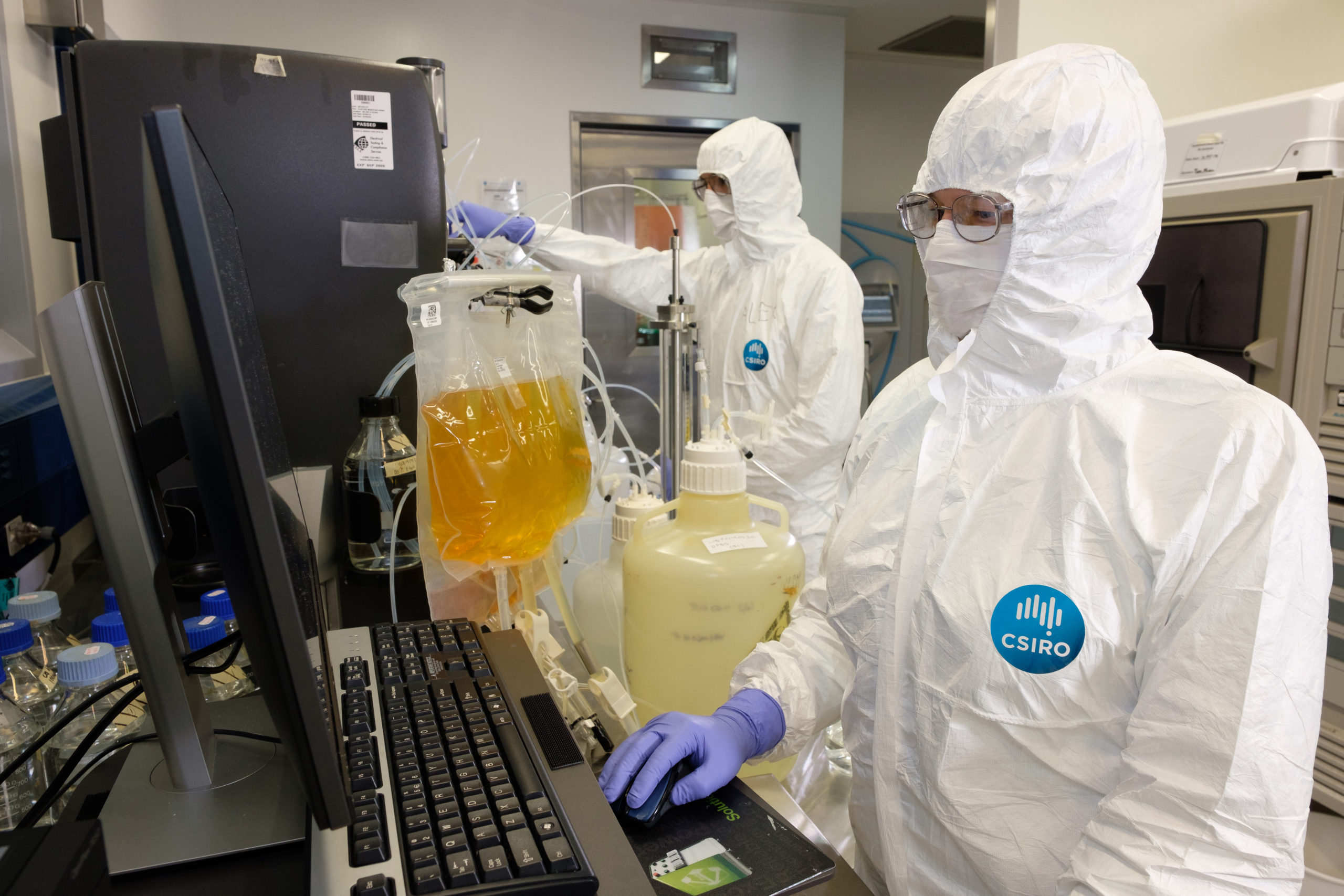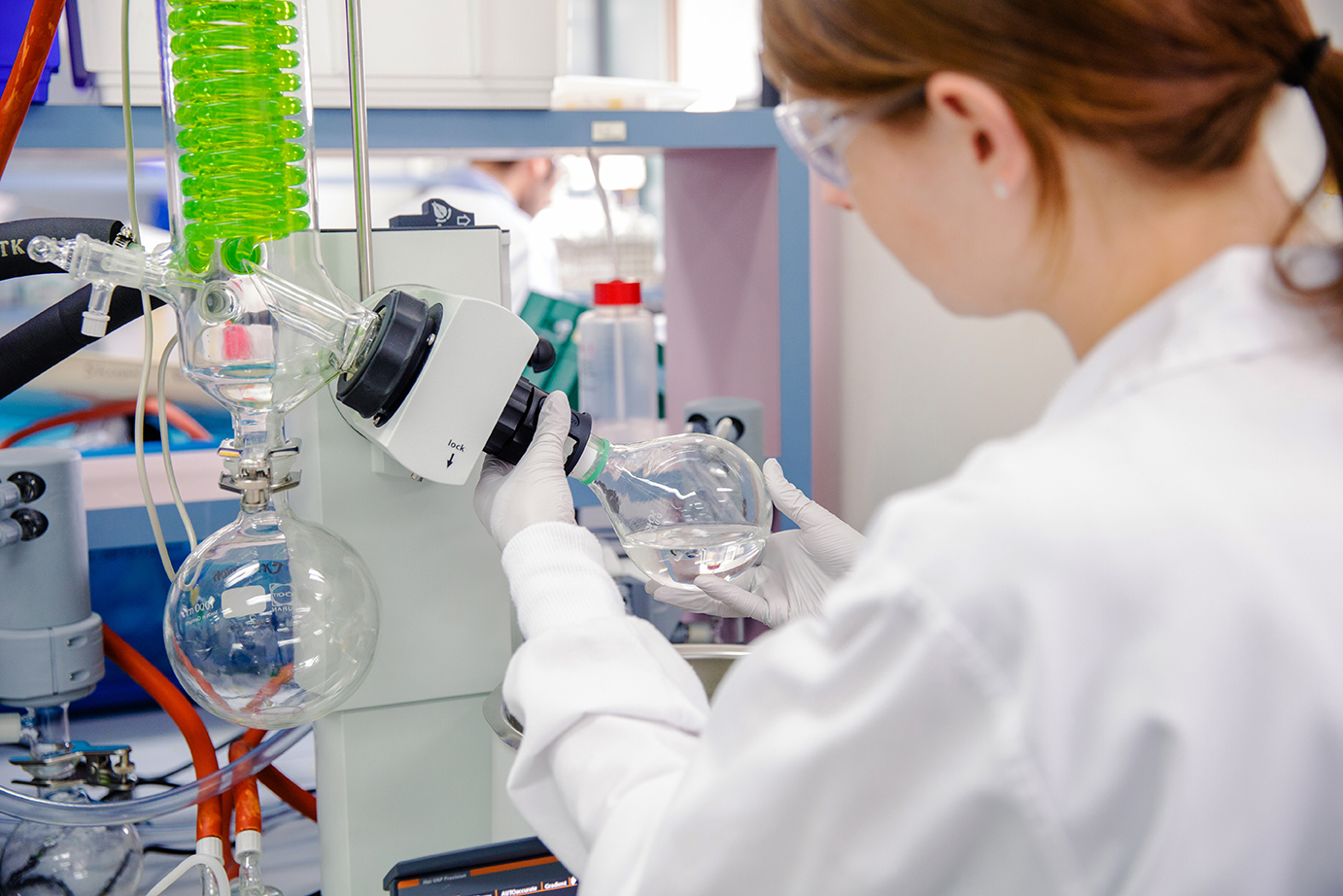
Our researchers are studying the SARS-CoV-2 virus, which has a single-stranded RNA genome. This is the virus that causes COVID-19.
We have just marked one year since the first reported case of COVID-19 in Australia. In that time, we’ve seen the damage a global pandemic can do. There have been millions of deaths and disrupted lives and livelihoods.
The spirit of Australia is vastly different to what it was before COVID-19. Since the start of the pandemic, we have seen almost 30,000 cases and more than 900 deaths in Australia. There have been multiple lockdowns and huge shifts in the way we live and work. We have had to reimagine iconic events like the Australian Open.
One year on, we have cause to celebrate. We’ve developed vaccines against a coronavirus for the first time in history. Countries around the world are planning for vaccination rollouts. Australia’s Therapeutic Goods Administration approved Pfizer’s COVID-19 vaccine for provisional release, with the rollout scheduled to begin in late-February.
How did we get here?
It’s amazing to think how quickly we’ve achieved this, but it is something we have been planning for. For years, we’ve been preparing for the emergence of Disease X. This is an unknown pathogen or virus that poses a serious threat to human health. This time, it turned out to be COVID-19.
As a result of the global scale and severity of the outbreak, we’ve seen unprecedented global scientific collaboration to tackle the pandemic. Australian researchers have played a crucial role in this international response. We had a head-start thanks to our ongoing research into vaccines and acute respiratory illnesses like SARS. This has given us the opportunity to respond to the outbreak quickly.
The pandemic triggered a rapid mobilisation and collaboration of the science community across Australia. Research collaborations between us, universities and research institutions, as well as industry, created Team Australia. We’ve made significant contributions to tackling COVID-19.

Working with bioengineered mammalian cells, CSIRO’s fermentation biology team produces and scales-up vaccines – from the laboratory to pilot-scale – in line with best practice manufacturing standards. ©Nick Pitsas
Team Australia’s rapid research response
The nation’s scientific endeavours were pivotal early on in understanding more about the virus, how it works and how it changes. Australian virologist Professor Edward Holmes from the University of Sydney uploaded the very first genome sequence of the virus. The Peter Doherty Institute in Melbourne was the first laboratory outside China to successfully grow the virus from a patient sample, providing international laboratories with crucial information to help combat the virus.
Building on this research, our team started preclinical trials with the Coalition for Epidemic Preparedness (CEPI) on two leading vaccine candidates. At the same time, our team was also involved in readying the University of Queensland’s vaccine candidate for phase 1 clinical trials.
We’ve used data, bioinformatics and genome sequencing to better understand how strains of the virus evolve and to identify new clusters, developed dashboards to help track and spread the disease, and research from the University of Melbourne created mathematical and computational disease models to help support government decisions during a pandemic.
Team Australia is playing a crucial role in vaccine development with the University of Oxford and AstraZeneca vaccine, and Australian company CSL has the capability to manufacture vaccines onshore. An at-home COVID-19 diagnostic test developed by Brisbane-based company Ellume was approved for emergency use by the Food and Drug Administration in the United States.
We’ve also been instrumental in the development of an early warning surveillance system to trace the presence of the virus in raw sewage and created Australia’s first accredited mask testing facility to support local mask manufacturers to fast-track supply of masks to frontline health workers.

Our sewage tracing research brings together a national collaboration of government authorities, wastewater utilities, universities and other research organisations and commercial laboratories. Credit UQ ©University of Queensland
Unpredictable but positive outlook
Australians have been proactively involved in preventing the virus from spreading and reducing community transmission. It’s certainly been a busy 12 months.
While our list of achievements should be commended, it’s not an exhaustive list of all the contributions and collaborations. The tireless effort of our world-leading science community to confront the COVID-19 crisis continues.
This groundwork has given us a positive – yet, slightly unpredictable – outlook for 2021.
Tracing and tracking systems have given us a good handle on the virus. But hotspots continue to pop up across the community. As such, our science will continue to contribute to ongoing testing and surveillance to catch early signs of the virus in our wastewater. Ongoing monitoring of changes to the virus will also be key to ensuring our vaccines remain effective. By detecting and understanding any new virus strains early, we can support potential updates to COVID-19 vaccines. This is similar to the influenza vaccine.
We’ll need to maintain public health measures in our ‘next normal’. This means social distancing, wearing masks where you can’t social distance, and good hand hygiene will remain a part of Aussie life for now.
Preparing for the next Disease X
We continue to witness the devastation of countries around the world grappling with COVID-19 cases and deaths. The emergence of diseases which primarily spread from animals to humans (zoonotic diseases) are occurring more frequently. Zoonotic diseases underpin most pandemics like COVID-19.
While we continue to work through this pandemic, we need to take stock of the extraordinary achievements of 2020 to prepare for the next human health threat. The speed and agility of scientific advancements from the past 12 months have been nothing short of extraordinary. Just as SARS gave us a head-start for this pandemic, we need to take what we’ve learnt over the past year. The benefits of innovation, collaboration and cooperation will better protect us from the next Disease X.
As there will most certainly be another one – it’s just a question of when.


18th April 2021 at 11:22 pm
I do not believe anyone should question the extraordinary efforts made by Australian scientists to contain COVID-19 and to help develop an effective vaccine. However, as of Late April 2021 we are still to have a vaccine that the entire general public can have 100% confidence.
Had UQ and CSL been permitted to continue with their research they may well have been able to find a valid solution to the problems they encountered in Phase 1. It seems other research facilities around the world may not have been as stringent in their development of vaccines.
Australian research facilities should persist …… for Australians and our fragile state neighbours for whom we have a pandemic responsibility.
Is anyone actually researching the cause of these zoonotic diseases and how we can prevent / teach people of the dangers we face as a species by our treatment of other species. Surely this pandemic has created an unprecedented opportunity to demonstrate to the global community our abuse of the planet and other species and habitats needs to cease. (… I am not a nut. I would like to believe I am pragmatic.